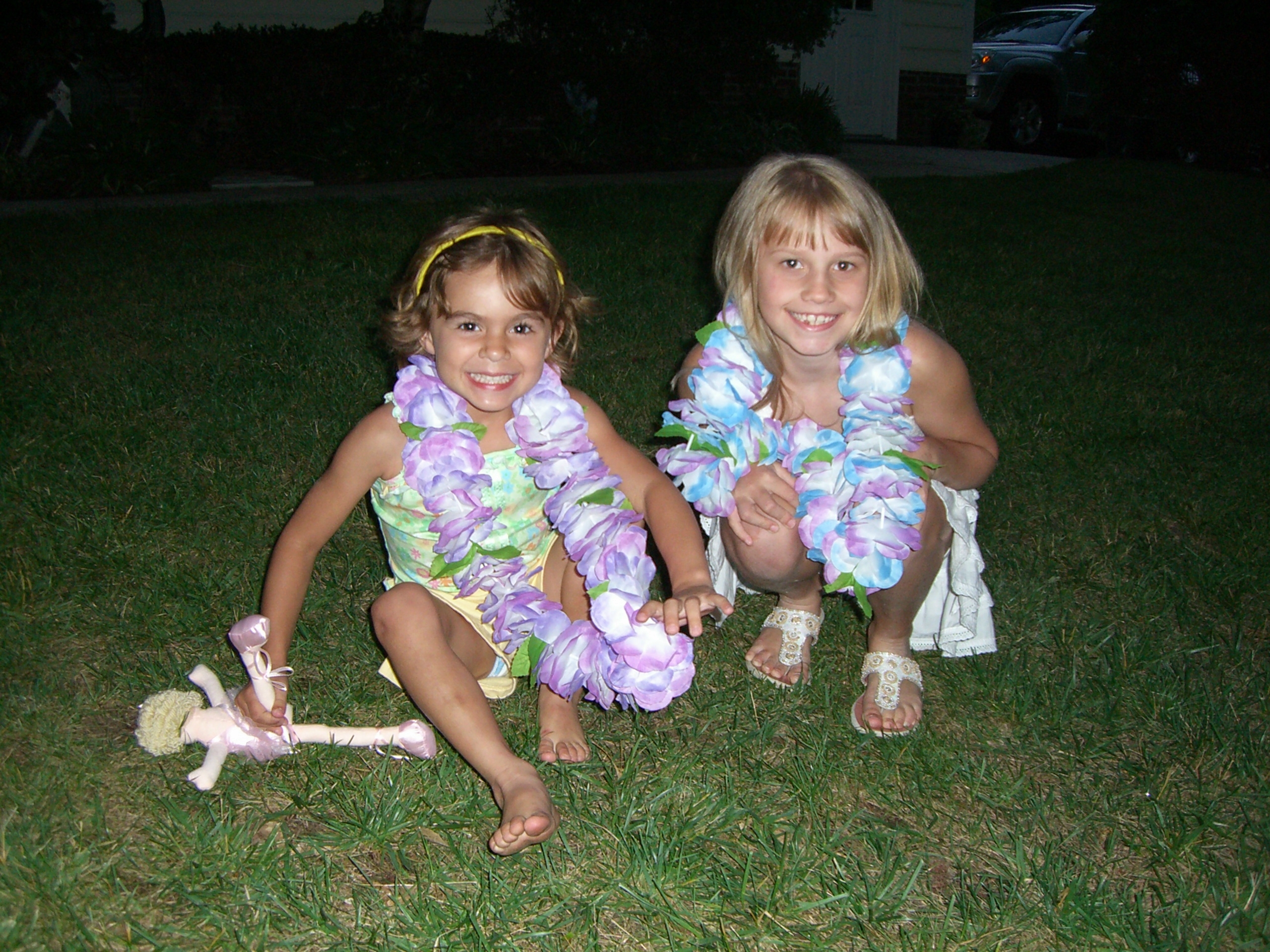I hate July 24.
On June 3, 2006, my grandparents hosted my wedding shower at their house in Wake Forest, NC. It was the first day of the happiest seven weeks of my life. At the time, I had no way of knowing that it would be the next-to-last time that I would have my entire family and my closest friends together for a happy occasion (my wedding would be the last). We grilled burgers and chicken and dined on card tables set up on the lawn behind Grandma Kathryn’s beloved back porch. The sun sank beneath the horizon about the time John and I opened the last gift and my grandfather polished off the last piece of cake; my little sister, Taylor, and our cousin, Morgan, hung Hawaiian leis around their necks and chased fireflies across the grass, their bare shoulders bathed in the soft moonlight and their laughter in our ears.
On June 24, I married my best friend from high school in a beautiful inn famous for its lush gardens in the mountains of North Carolina. Taylor and Morgan ruled the tiny, makeshift dance floor in the inn’s parlor after the ceremony.
On July 24, my husband and I wished each other a happy one-month wedding anniversary, kissed each other goodbye and headed our separate ways for work. As I drove to the office under a clear blue sky, I thanked God for all the gifts He had given me. I was newly married to my best friend and had an amazing family, a great job and even a promising novel in the works. I felt invincible.
A few minutes after 10 that morning, I hit ‘save’ on a press release to take a call from my mother.
I can’t remember much of what Mom said to me. I don’t know how much I heard over the loud ringing that filled my ears after she said the words “neuronal ceroid lipofuscinosis” in reference to Taylor. I remember, with my sobbing mother still on the phone, Googling that phrase with trembling fingers and crumpling into my chair like a crushed soda can when I read the summaries listed with the search results until my eyes filled with tears and I couldn’t read any longer. The words and phrases shot off the screen and straight into me like icy daggers, each one more awful than the last:
Rare.
Inherited.
Progressive.
Seizures.
Motor deterioration.
Cognitive deterioration.
Blindness.
No treatment.
No cure.
Early death.
I don’t remember the rest of that phone call, but I will remember July 24, 2006 for as long as I live.
Taylor doesn’t chase fireflies in the moonlight anymore, but I will never forget the innocent beauty of that night she shared with our cousin, Morgan, before a sleeping genetic defect awoke from its seven-year slumber and began its systematic destruction of a life with great promise.
I no longer need Google to tell me what neuronal ceroid lipofuscinosis – or Batten disease – does to a child like Taylor. I’m an expert on a disorder I never wanted to know. I’ve spent time with the world’s greatest Batten disease scientists. I’ve seen it unfold in real life. I’ve watched it wreak havoc on my sister. I’ve seen the names of children I know added to the list of “Batten angels.”
I declared two wars on Batten disease on July 24, 2006 – the war for my little sister, and the war to end Batten disease forever.
Batten disease is winning the war for my little sister. It’s had six long years to do its dark work.
As I’ve watched how Taylor has faced her disease, I’ve realized one thing that gives me satisfaction, if not true solace:
Batten disease may have the power to destroy a life with great promise.
But it can never destroy a heart with great love.

